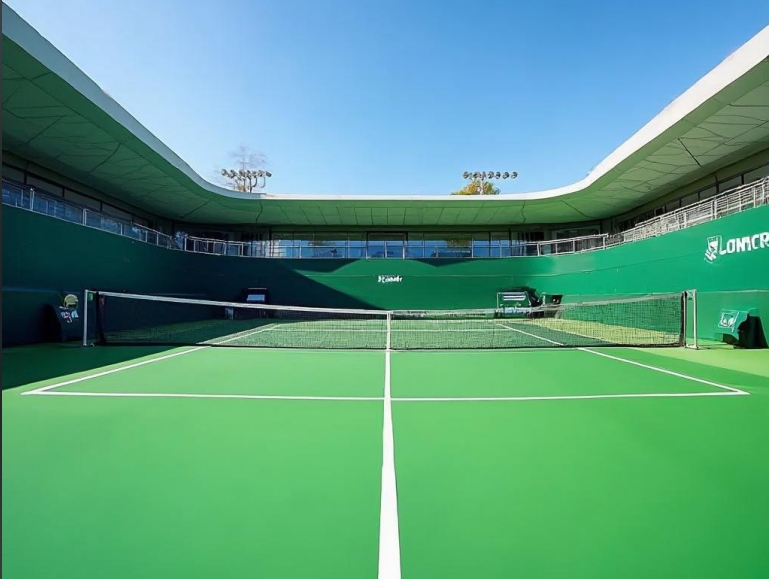Application of High-power Led Tennis Court Light Fixtures in Tennis Courts Lighting

Directory:
1. The Importance of High-Power Led Tennis Court Light Fixtures in Tennis Courts Lighting
1.1 Addressing Flicker Issues
1.2 Mitigating the Heat Impact of Lamps on Air Conditioning Systems
1.3 Enhancing Lighting Quality by Reducing Glare
2. Implementation of High-Power Led Tennis Court Light Fixtures in Tennis Courts Lighting
2.1 Managing LED Flicker
2.2 Anti-Glare Design
2.3 Intelligent Dimming Control
Advancements in LED lighting technology have effectively addressed the issues of significant light decay and inadequate heat dissipation that plagued early LED Light Fixtures. These modern LED Light Fixtures demonstrate advantages in energy efficiency, environmental sustainability, stable operation, and high impact resistance. Their overall performance surpasses that of energy-saving options like metal halide and fluorescent lamps, making them suitable for the lighting needs of major international events, particularly in tennis stadiums.
1. The Importance of High-Power Led Tennis Court Light Fixtures in Tennis Courts Lighting
1.1 Addressing Flicker Issues
According to established standards, major tennis competitions require a vertical illumination of at least 1.800 lux for ultra-high-speed cameras, while keeping the flicker ratio below 6%. Currently, some tennis venues rely on gas discharge lamps, such as metal halide and high-pressure mercury lamps. These lamps, when powered by 50 Hz AC, experience fluctuations that lead to flickering. If the flicker ratio exceeds 6. it becomes noticeable to viewers, causing issues during slow-motion replays in HDTV broadcasts. In contrast, high-power LED Light Fixtures, while they may flicker occasionally, offer superior flicker control and performance compared to gas discharge lamps, resulting in lower flicker ratios and indices. This makes them a popular choice for tennis stadium lighting systems.
1.2 Mitigating the Heat Impact of Light Fixtures on Air Conditioning Systems
Currently, some tennis stadiums have replaced incandescent lamps with energy-efficient options like high-pressure sodium and metal halide lamps, resulting in notable energy savings and improved luminous efficiency. However, these lamps generate significant heat during prolonged use, as only about 30% of the electrical energy is converted into light, with actual luminous efficiency dropping to just 15% to 20% due to light source losses. This heat output necessitates increased operation time and energy consumption from the stadium's air conditioning system to maintain a stable temperature. Adjustments to the specifications and quantity of air conditioning units and related equipment may also be required, which contradicts energy-saving goals and limits the overall energy efficiency of the stadium.
1.3 Enhancing Lighting Quality by Reducing Glare
LED Light Fixtures are effective in minimizing glare, providing a softer light output. They exhibit characteristics such as a natural halo transition, aesthetically pleasing light spots, absence of yellow spot stray light, effective secondary light spot control, focused light spots, and a light efficiency exceeding 85 lm/W.
2. Implementation of High-Power Led Tennis Court Light Fixtures in Tennis Courts Lighting
2.1 Managing LED Flicker
In terms of flicker control, while LED Light Fixtures generally outperform gas discharge lamps, only those that meet specific criteria can fully address flicker issues; otherwise, more severe flicker problems may arise. For instance, measurements show that the flicker index for DC LED Light Fixtures is 0.0037 with a flicker ratio of 2.8%, while metal halide lamps have a flicker index of 0.16 and a flicker ratio of 52.0%. Heavy flicker LED Light Fixtures can reach a flicker index of 0.45 and a flicker ratio of 99.0%. To achieve optimal flicker control in the tennis stadium's lighting, the solution must fulfill three criteria: proper selection of the driving power supply, suitable dimming methods, and full compatibility among lamps, power supplies, and dimmers.
2.2 Anti-Glare Design
To enhance the anti-glare performance of high-power LED Light Fixtures, it is essential to use LED Light Fixtures with silicon carbide substrates that offer effective heat dissipation. It is important to maintain a safe distance between the driver and the LED lamp, place the driver in a dedicated box, incorporate a light effect adjustment control device, and install frosted anti-glare covers both inside and outside the LED lamp. Additionally, each lamp bead should have a separate lens, the shading angle should be checked based on the lamp's brightness, and diffuse reflection should be utilized as the method for light output. These measures will effectively address the glare issue and keep the light decay rate of high-power LED Light Fixtures below 5% throughout their lifespan.
2.3 Intelligent Dimming Control
To address the specific lighting requirements of different areas within the tennis stadium and enhance energy efficiency, it is necessary to implement an intelligent dimming control system alongside high-power LED Light Fixtures. This involves establishing a DALI digital dimming system, equipping each LED lamp with compatible DALI dimming ballasts, installing DALI gateway devices within the system, and developing features such as remote dimming, lighting scene switching, lamp status monitoring, and fault self-diagnosis in the system software. By utilizing the specific addresses of the DALI ballasts and gateway devices, the intelligent dimming system can control the lighting modes and operational parameters of each high-power LED lamp individually, automatically executing pre-set lighting control plans. This approach reduces the operational time of the lighting system and minimizes power consumption. For instance, if localized lighting is required in the tennis stadium, it is possible to activate one or more LED Light Fixtures to illuminate a specific area without turning on all the lamps in the stadium or lighting partition. Furthermore, compared to energy-saving options like metal halide lamps, high-power LED Light Fixtures only require the installation of DALI dimming ballasts and DALI gateway devices, allowing 3 to 4 LED Light Fixtures to be connected to the same circuit. This eliminates the need for individual circuits for each lamp at the distribution box, simplifying the distribution box size and reducing the number of outgoing line switch devices needed.